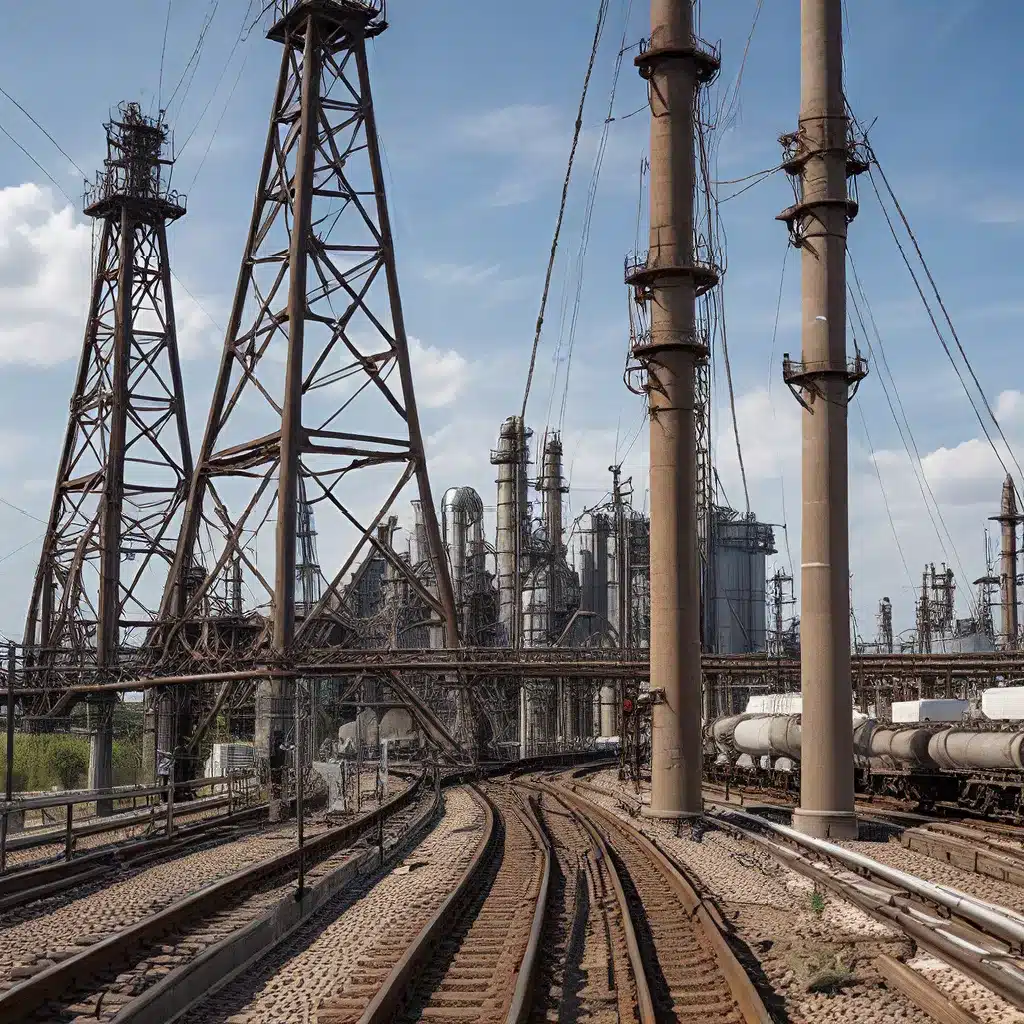
In the ever-evolving landscape of infrastructure management, sensor networks and Internet of Things (IoT) technologies have emerged as transformative tools for enhancing the resilience and efficiency of critical assets. By leveraging the power of generative AI, infrastructure owners and operators can now predict maintenance needs, anticipate the impact of natural disasters, and continuously monitor the health of their systems, ensuring uninterrupted service and long-term sustainability.
Predictive Maintenance: Extending the Lifespan of Critical Infrastructure
Predictive maintenance is at the forefront of this technological revolution, enabling infrastructure owners to proactively address issues before they escalate into costly failures. Through the integration of AI sensors and predictive analytics, infrastructure components can be continuously monitored, allowing maintenance teams to identify and address potential problems before they become critical.
Take the example of CoastalCity, a coastal urban area facing unique maintenance and resilience challenges. The city’s infrastructure, which includes bridges, roads, and coastal defenses, requires robust maintenance strategies to withstand the harsh environmental conditions. By implementing an AI-driven predictive maintenance system, CoastalCity has been able to reduce unplanned downtime by 40% and extend the lifespan of its infrastructure components by 20%.
The key to this success lies in the integration of advanced sensors and predictive analytics. AI sensors are installed on critical infrastructure components, collecting real-time data on structural health indicators such as vibration, stress, and temperature. This data is then analyzed by AI algorithms to identify patterns and predict potential failures. Maintenance teams are alerted in advance, allowing them to perform necessary repairs before issues become critical.
This approach not only reduces unplanned downtime but also results in significant cost savings and enhanced safety for the community. By addressing issues proactively, CoastalCity has been able to extend the lifespan of its infrastructure, ensuring a more reliable and resilient network.
Disaster Resilience: Preparing for the Unexpected
Alongside predictive maintenance, AI-powered solutions are also transforming the way infrastructure owners approach disaster resilience. By modeling and simulating the impact of natural disasters, generative AI can aid in the design of more resilient structures capable of withstanding extreme events.
In the case of CoastalCity, the city has developed a comprehensive disaster resilience strategy that leverages the power of AI. Generative AI models are used to simulate the potential impact of natural disasters, such as coastal storms and flooding, on the city’s infrastructure. This allows infrastructure designers to identify vulnerabilities and develop more robust solutions that can withstand the predicted stresses.
Furthermore, the city has implemented real-time monitoring systems that utilize AI sensors to continuously assess the condition of critical infrastructure. By integrating this data with predictive analytics, CoastalCity can anticipate the effects of natural disasters and proactively initiate response and recovery measures, minimizing downtime and ensuring the resilience of its vital services.
Towards a Smarter and More Resilient Future
The advancements in sensor networks and IoT technologies, coupled with the transformative capabilities of generative AI, are paving the way for a future where critical infrastructure is not only better maintained but also more resilient to the ever-changing environmental and operational demands.
By harnessing the power of AI sensors, predictive analytics, and generative AI, infrastructure owners and operators can now extend the lifespan of their assets, reduce unplanned downtime, and enhance the overall resilience of their systems. This not only translates to cost savings and improved safety but also ensures the continued delivery of essential services to the communities they serve.
As the sensor network and IoT landscape continues to evolve, we can expect to see further advancements in areas such as energy management, security, and data-driven decision-making. These innovations will be crucial in addressing the complex challenges faced by infrastructure owners, enabling them to build smarter, more sustainable, and more resilient systems that can withstand the test of time.
At Sensor-Networks.org, we are committed to exploring and disseminating the latest developments in sensor network technology and IoT applications. By sharing insights, case studies, and expert analysis, we aim to empower infrastructure owners and operators with the knowledge and tools they need to create a more resilient and sustainable future.
Embracing the Future of Sensor-Driven Infrastructure
As the world grapples with the increasing complexities of infrastructure management, the integration of sensor networks, IoT, and generative AI has emerged as a game-changer. Through predictive maintenance, disaster resilience planning, and continuous monitoring, infrastructure owners can now proactively address challenges, extend the lifespan of their assets, and ensure the uninterrupted delivery of essential services.
The example of CoastalCity showcases the transformative impact of these technologies, demonstrating how AI-driven predictive maintenance can reduce downtime, generative AI can enhance disaster resilience, and AI sensors can enable real-time monitoring of infrastructure health.
As we look towards the future, the sensor network and IoT landscape will continue to evolve, unlocking new opportunities for energy management, security, and data-driven decision-making. By embracing these advancements, infrastructure owners can build smarter, more resilient systems that can withstand the challenges of the modern world.
The journey towards a more sustainable and resilient infrastructure future starts with a commitment to innovation and a willingness to leverage the transformative power of sensor-driven technologies. By working together, we can create a world where critical assets are better maintained, more resilient, and better equipped to serve the needs of our communities.